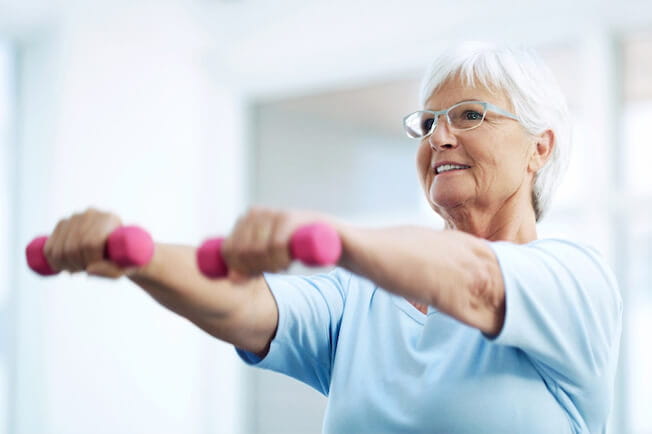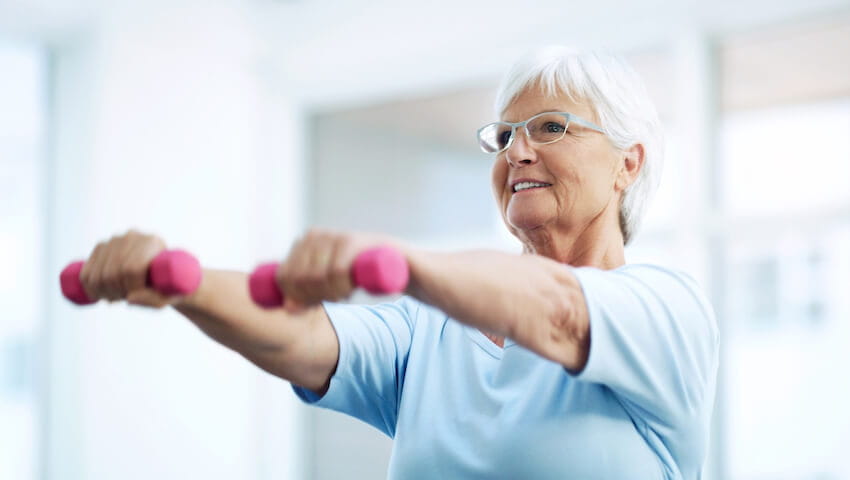Lymphedema and exercise: Make sure you're getting the most benefit

Your lymphatic system is an important part of keeping the body healthy, moving protein-rich fluids through your body to remove bacteria, viruses and waste. But when these fluids don't move through the body, you may experience lymphedema, a chronic condition that results from inadequate lymphatic drainage.

Although lymphedema can have a variety of causes, it is most frequently found in patients with cancer. At least 20 percent of breast cancer survivors develop lymphedema, and head and neck cancer, melanoma and gynecological cancers have also been linked to the condition, often as a result of surgery or radiation.
For this reason, many patients with cancer seek the help of a certified lymphedema therapist during their recovery. A therapist can help conduct complete decongestive therapy, better known as CDT. CDT involves draining the lymph nodes manually, bandaging the affected area, and getting fitted for a compression garment to help encourage drainage. These steps are critical, as ignoring excess fluid build-up can result in increased infections, pain, arm sensations and other distress.
But they're not the only steps to take.
Patients with lymphedema are also encouraged to maintain a healthy lifestyle. Exercising daily can reduce lymphedema flare-ups, and the combination of exercise and compression garments will help the body's natural fluids to return to the circulatory system, which can reduce swelling.
Exercising with lymphedema
When exercising, there are a few key points to keep in mind:
1. Posture
It's important to have good posture in order to avoid injury and get the most out of your exercise routine.
2. Proper fit
Effective exercise with lymphedema also requires a proper-fitting, support bra, for women, and compression garments to facilitate blood circulation throughout the body.
3. Combination of exercises
A high-quality exercise program should consist of aerobic, strengthening, and flexibility exercises.
- Aerobic conditioning with light resistance and keeping a healthy weight will reduce flare-ups of lymphedema. Exercises like Pilates, yoga, tai chi, qigong and aquatic exercises are all aerobic exercises that have health benefits.
- While performing strengthening exercises, weights can be gradually increased, if no symptoms arise. If you've never exercised or strength trained before, start with a lower resistance and increase your reps before you add weight. According to PubMed, based on a systematic review update and meta-analysis: Resistance exercise can potentially decrease breast cancer related lymphedema symptoms and increase strength.
- Adding stretching exercises to your routine will help preserve range of motion and minimize skin scarring. These flexibility exercises are especially important during post-op and radiation for patients being treated for cancer. According to PubMed, based on a systematic review update and meta-analysis: Resistance exercise can potentially decrease breast cancer related lymphedema symptoms and increase strength. Keep in mind that exercise, for those at risk for lymphedema, should be customized to fit your needs. At any point in time, if there is any discomfort, pain or increased swelling, stop all exercise and consult a doctor.
Taking care of lymphedema is a lifestyle change. With regular check-ups with your doctor and lymphedema therapist, fluid volumes can be decreased, and flare-ups and infections can be prevented. Exercise and education are the keys to keeping your lymphedema maintained.
Find out more about the Lymphedema Management Program at Main Line Health. To find a lymphedema therapist near you, call 484.596.5000.
Julie Caldwell MPT, CLT is a physical therapist at Main Line Health Newtown Square.
 Content you want, delivered to your inbox
Content you want, delivered to your inbox
Want to get the latest health and wellness articles delivered right to your inbox?
Subscribe to the Well Ahead Newsletter.
